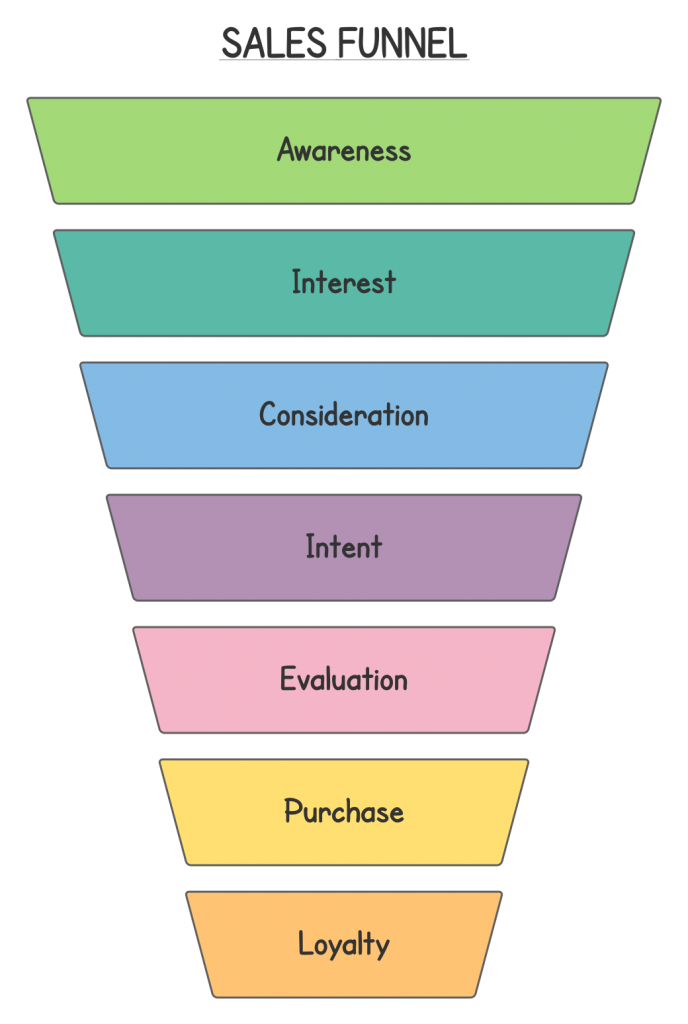Why hire a copywriter?
A copywriter writes the words to help your business communicate with your ideal customers.
They can help with all kinds of things like:
- Website copy
- Blog articles
- Direct mail
- Brochures
- Ebooks
- Flyers/posters
- Email marketing
- Social media posts
- Communication strategy
- Lead magnets
- Advertising
- Scripts/storyboards
- Slogans/taglines/straplines
- Product names/descriptions
- Guidebooks and manuals
- Case studies/storytelling
- Creative concepts
- Brand messaging/tone of voice.
These are some of the components that will help your brand educate, inspire, inform, sell — and, ultimately, grow.
Of course, you could write these things yourself, but many business owners find this hard. This is because you’re too close to your business and don’t always have the objectivity to see things from your prospects’ point of view.
A copywriter will get to know your ideal customers and meet them where they are. Using their language and their struggles to write copy that’s accessible, relatable and makes a genuine connection.
And that’s why you should hire a copywriter.
How copywriting will help you sell more and grow your business
Increasing organic traffic to your website
When it comes to selling and growing your business, your website is one of the best tools you have. Online 24/7, helping your prospects and introducing them to your brand. Even at 3am when the problem that’s consuming them is keeping them awake.
An SEO copywriter will write the search-engine-optimised copy and content your website needs. This will attract more of the right kinds of visitors to your website and help sell your products/services to them.
Creating regular blog content
Having a blog on your website, and publishing regular articles on it, is an essential part of your SEO strategy. It creates a handy resource for your website visitors. And it helps you demonstrate your experience, expertise, authoritativeness and trustworthiness (E-E-A-T).

While your main website sells, your blog should be attracting a wider audience. This includes those who could become valuable customers, but aren’t quite ready to buy yet.
An SEO content writer will create a strategy to broaden your reach, so you can target the full extent of your market. The content they write should guide, educate and inspire your audience with expert advice, information and ideas. This will give them the confidence to buy when they are ready.
And it should, ultimately, lead to more sales and sustainable growth.
Guiding prospects through your sales funnel
Together, your SEO copy and content should be attracting people at all stages of their journey and guiding them through your sales funnel.
A typical sales funnel looks something like this.

Prospects will enter the top of the sales funnel when they first realise they have a problem. Typically, they’ll use problem-based language to search for answers online.
Your content will draw them in, giving them the answers they need, which will make them aware of your brand and your solution to their problem. This will pique their interest. Your content will then assist them with further research and consideration.
By this point, they should have intent to buy and will be evaluating their options, before finally making a purchase. Helping them make the right purchasing decision will inspire loyalty to your brand, meaning they’ll be more likely to recommend you and buy from you again.
Attracting right-fit prospects, repelling wrong-fit ones
Your brand will have ideal customers who are the perfect fit for what you’re offering. And a whole bunch of wrong-fit prospects you don’t want to sell to.

For example, the wrong-fit prospects might:
- Not have the right conditions for your product/service
- Be the wrong kind of people for what you’re offering
- Have unrealistic expectations about what you can do
- Not have a big enough budget to work with you
- Be satisfied with a simpler and cheaper solution.
Trying to sell your product or services to wrong-fit prospects is a bad idea. Yes, you might make some money, but you could end up with customers who feel let down, ripped off or disappointed. They won’t have a positive experience with your brand and they could use that to negatively affect your reputation.
Your copywriter will tailor your copy and content, so it speaks to your right-fit prospects. And it will make it clear to the wrong-fit prospects that what you’re selling isn’t for them.
Anticipating common questions
Every prospect will have questions before they make a purchase. It’s your copywriter’s job to anticipate what those questions will be and answer them as they’re likely to arise.

By answering your prospects’ questions, your copy will demonstrate that you understand them and their problem. And it will show your ideal customers you have just what they need to fix it.
Giving your prospects a good experience
A copywriter will focus on giving your prospects the best experience of your brand.
For example, on your website this should include:
- Copy that’s clear, specific explicit and easy to understand
- Navigation that’s logical and anticipates your visitors’ needs
- Well-thought-out micro-copy for friction-free processes
- Objective advice and guidance that will benefit them
- A comprehensive library of useful and valuable content.
Championing your key differentiators
Brands should focus on what makes them different to the their competitors rather than what makes them better.
Better
When you and your competitors are on the same path, your competitors can easily move ahead of you.

Different
Choosing a different path and doing things differently makes it harder for competitors to copy you.

Your copywriter will focus on your key differentiators and highlight them in your copy. This will give your brand an edge over your competitors, making it easier for you to attract a following, connect with them, sell and grow.
You can read more about this in my article: How to make your brand more unique >>
Highlighting common pain points
The ‘pain’ is the problem your prospects are experiencing. And it can be a powerful persuader when it’s used correctly and skilfully. Because some prospects will be prepared to do anything to make their pain go away.

When your copywriter writes about your prospects’ pain points, your copy will become more relatable for them. They’ll feel seen, accepted and understood. And when your copywriter presents them with the pain relief your offering will bring, it will be compelling.
Read more on this in my article: Pain points: Why you should leave them to a professional copywriter >>
Turning features into benefits
Your copywriter will turn the features of your product or service into tangible benefits for your ideal customers.
The features of a product or service describe its purpose and components. The benefits take that one step further, by giving context to the features and painting a picture of success.
For example:
❌ Features only
The telescope has a focal length of 2032mm and gives 480x magnification.
This might not mean much to a budding stargazer who’s looking to buy a telescope. So let’s improve it by talking about the benefits.
✅ Benefits
The telescope is so powerful you can see all the way into deep space and get right up close to other planets.
The benefit gives prospects a better idea of what this telescope will do for them. But we could still go one better.
✅ Features and benefits
The telescope has a focal length of 2032mm and gives 480x magnification. It’s so powerful you can see all the way into deep space and get right up close to other planets.
Including features and benefits allows prospects to compare this telescope with other models.
Read more on this in my article: Features vs. benefits and how copywriters use them to sell >>
Using emotion
Harvard Business School professor, Gerald Zaltman tells us that 95% of our purchasing decisions are emotional, taking place in the subconscious mind. So, if you want to sell more, you may need copy that moves your prospects in some way and makes them feel something.
Your copywriter can do this in a number of ways, from storytelling to immersing them in scenarios that will fire their imaginations.
Overcoming objections
Objections are the considerations that make your prospects think twice about buying from you.
The four most common objections copywriters have to deal with are:

- Lack of budget —> “We just can’t stretch to this.”
- Lack of trust —> “How can we be sure you’ll get results for us?”
- Lack of need —> “I don’t see why we’d use this.”
- Lack of urgency —> “This isn’t a priority for us right now.”
And they could all result in a “thanks, but no thanks” response.
It’s your copywriter’s job to address these and quash them so you stand more chance of making a sale.
Using clear and compelling CTAs
CTA stands for Call To Action and it’s one of the most important elements of a piece of copy.
Why? Because this is what each piece of copy/content is working towards and leading up to. It’s the thing that tells your audience what they need to do next.
Examples of common CTAs include:
- Contact forms for making enquiries
- ‘Buy now’ buttons for making sales
- Sign-up boxes for email marketing
- Telephone numbers to call now.
Your copywriter can make your CTA even more compelling by turning it into a Call To Value (CTV).
For example:
- Get in touch today and learn to play the ukulele in just 6 weeks
- Buy now and start growing your own organic vegetables in time for summer
- Sign up now and get FREE daily marketing tips straight to your inbox
- Call now and start achieving your sustainable weight loss goals.
Getting your prospects to convert into subscribers and customers is what will make you more sales and help your business grow.
Encouraging customer loyalty
It’s a well known fact that it costs businesses much more to get a new customer than it does to keep an existing one. So it makes sense to look after the customers you already have.
When prospects have become customers, your copywriter can help you maintain contact with them.
They’ll create content that helps them get the best from their product/subscription and answers their common questions. And they’ll write copy for your email list and other customer communications to help you promote additional products/services that might be of benefit.
Depending on your business you might:
- Promote peripherals/add-ons/spares/customisation for their purchase
- Offer exclusive perks, such as discounts or early-bird access to sales
- Suggest turning their one-time payment into a rolling subscription.
Does your business need a copywriter?
Allow me to introduce myself!
I’m Jenny Lucas, a freelance SEO copywriter and content writer based in Leicester, at the heart of the UK.
As a versatile generalist copywriter, I’ve helped countless business with their online and offline marketing efforts. From optimised copy and content for their websites and blogs, to beautiful brochures and flyers, punchy poster copy and full creative concepts. All with a results-driven approach to help them sell more and grow.
If you’d like to find out more about what I could do for you, head over to my main website, explore my blog or get in touch to discuss your needs.

You might also like…



